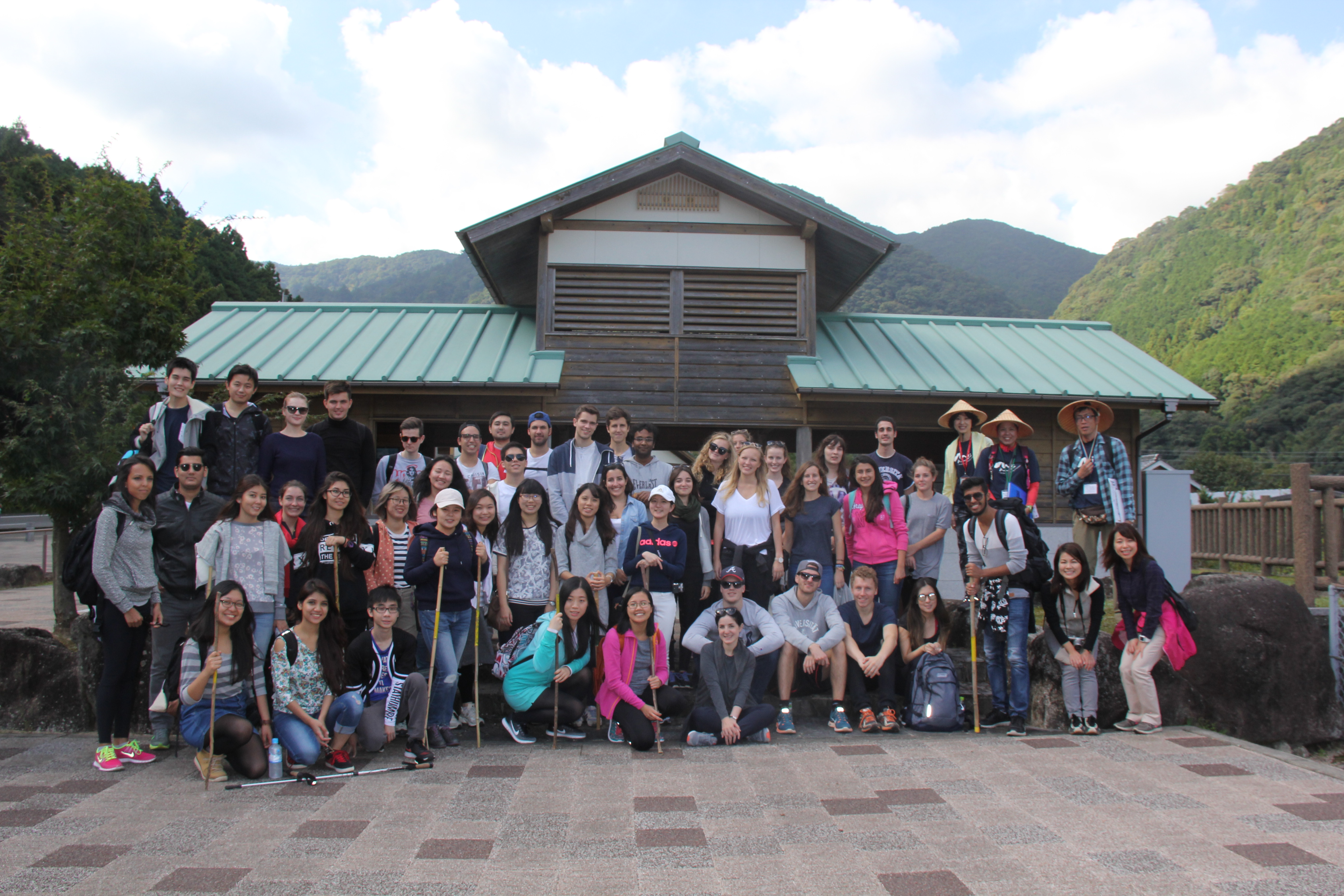Our guides are not simply registered, as is done by other organizations and travel agencies, but are trained at great length and expense to ensure that every guide is of a certain quality and that our clients are satisfied.
Attending “Koya Kumano Licensed Guide Interpreter Training” organized by Wakayama Prefecture
Wakayama Prefecture conducts training programs for interpreter-guides in the Koya and Kumano regions from September to March of the following year, both lecture and onsite.
We strongly recommend that our members participate (even if they are national certified interpreter guides).
In the lecture, participants learn “communication and hospitality,” “geography and history of World Heritage areas,” and “itinerary management” (total 22 hours), and in the on-site training, they learn about the Koyasan area and Kumano Kodo (total 20 hours, 4 days).
The final step is an interview in the language of their choice, and only after passing the interview will they be issued a license.
This is a major difference from the National Guide Interpreter Certificate, which can be issued only after passing an examination, making the course extremely valuable and practical.
Our association does not allow guides to go out into the field without holding one of the licenses (national or regional).
Interview and site walk at membership
Guides who wish to become members will have an online interview with a representative of our association.
Here, we will thoroughly review their motivation for joining our organization and determine if they are in line with our philosophy, have the qualities to please our clients, are not selfish, and have the right personality.
After the interview, a second interview is conducted, this time with a representative who will either walk a portion of the Kumano Kodo Trail or meet with them in person.
Here, we will look at their physical strength and human qualities, which we were unable to determine at the interview, and decide whether or not to admit them to the association.
This sets us apart from travel agencies that simply interview and register.
Training for new recruits
Once the applicant has been admitted to the program, the next step is training for new recruits.
The purpose of the newcomer training is to ensure the minimum skills necessary to be a guide, and to avoid the “one guide is better than the other” situation.
The newcomer training is divided into lecture and on-the-job training.
Lecture
Lectures will be conducted online via video viewing (9 hours total).
This is to allow each member to learn whenever they want, since the overwhelming majority of our members are guides as a side job.
In the classroom lecture, they will learn the following
Certification training and examinations → Guide debut
Newcomers are given “certification training” at a specific course in the prefecture, which is organized by the Association.
The certification training follows the newcomer’s training in general explanation, knowledge, guiding attitude, techniques, belongings, time management, risk management, first aid, etc., on the actual course.
Upon completion of the training, the next step is to take the “certification exam,” which is administered to our guides and other people invited from the general public.
The certification exam is graded according to the aforementioned items, and only those candidates who meet the standard scores are given priority for guiding.
We believe that it is necessary for guides to do what they want and show their own style, but without certain standards, guides will inevitably be different from one another, and the quality of their work will tend to vary greatly.
This is like playing the lottery for clients who are not sure which guide they would like.
In order to minimize such situations, our corporation is so committed to guide training.
In order to minimize such situations, our corporation is so committed to guide training.
This is because it is only on the basis of certain standards that a guide’s individuality can be expressed.
On-site training and training sessions with third-party instructors
We also regularly invite third-party instructors to conduct training for our members, although this may cost more.
Although it is possible for our guides of our association to serve as instructors, the reason we insist on third-party instructors is to prevent, for lack of a better word, “incestuous knowledge”.
This is to avoid being a “frog in a well” so to speak.
In addition to Kumano Kodo, we are also focusing on other areas, with 10 on-site training programs in FY2023.
Study sessions are conducted online for each topic.
About Guide Fees
After completing this process, they make their debut as guides in our association.
While it is a matter of course to ensure the safety and satisfaction of our clients, guiding along the Kumano Kodo, unlike guiding at other sightseeing spots, requires more physical strength, better judgment, and familiarity with local information, making it a “narrow gate” that not just anyone can pass through.
From the above points, our guides are very different from those who bring guests from the city.
The same can be said for storytellers who also guide guests in Japanese, but when it comes to personnel who can speak foreign languages, the number is extremely small in this rural area.
We understand that the guide fee may seem a little high, but we hope that you understand the process of becoming a guide and the circumstances in our region, and we would be happy to provide you with a guide.

